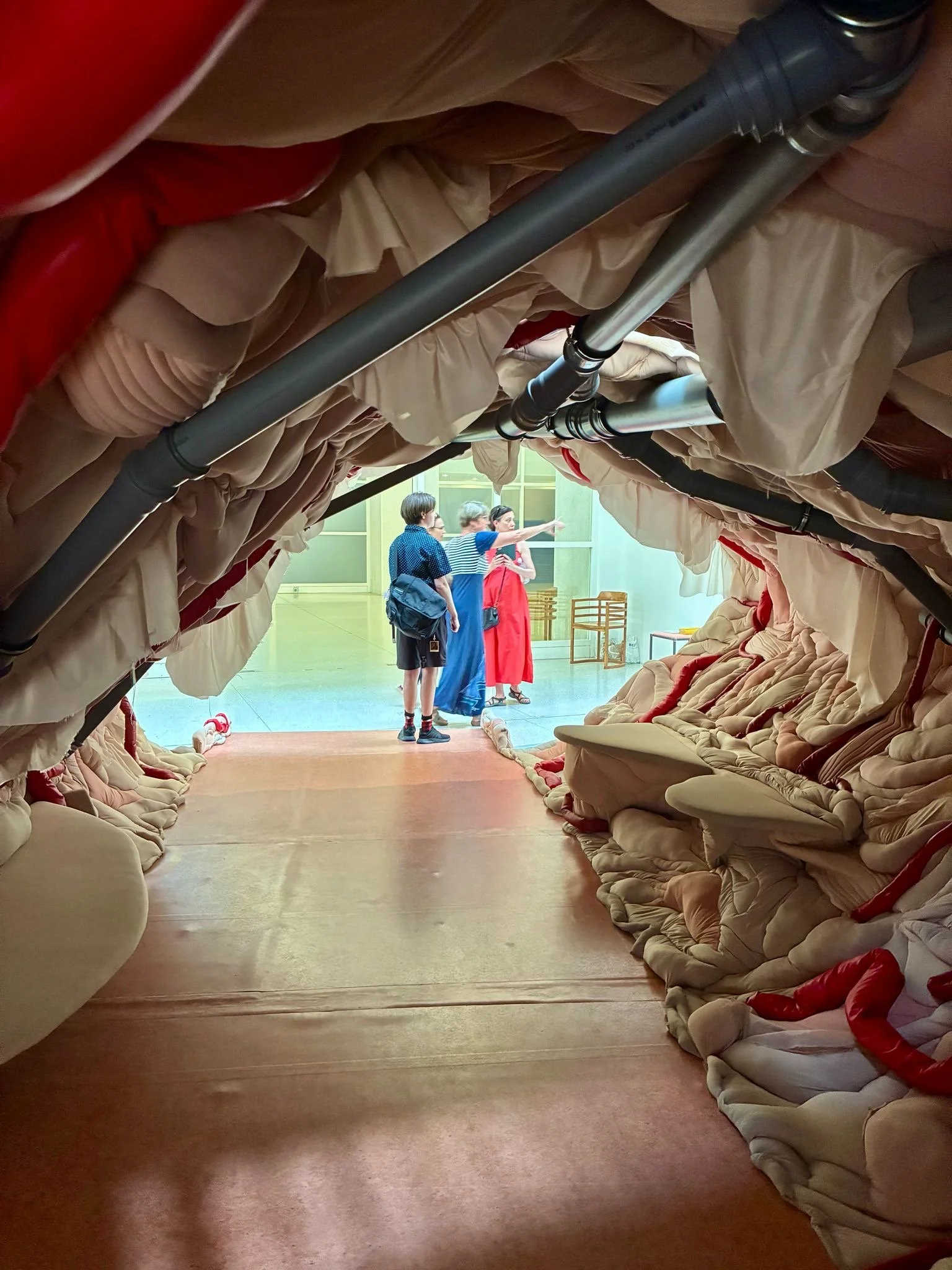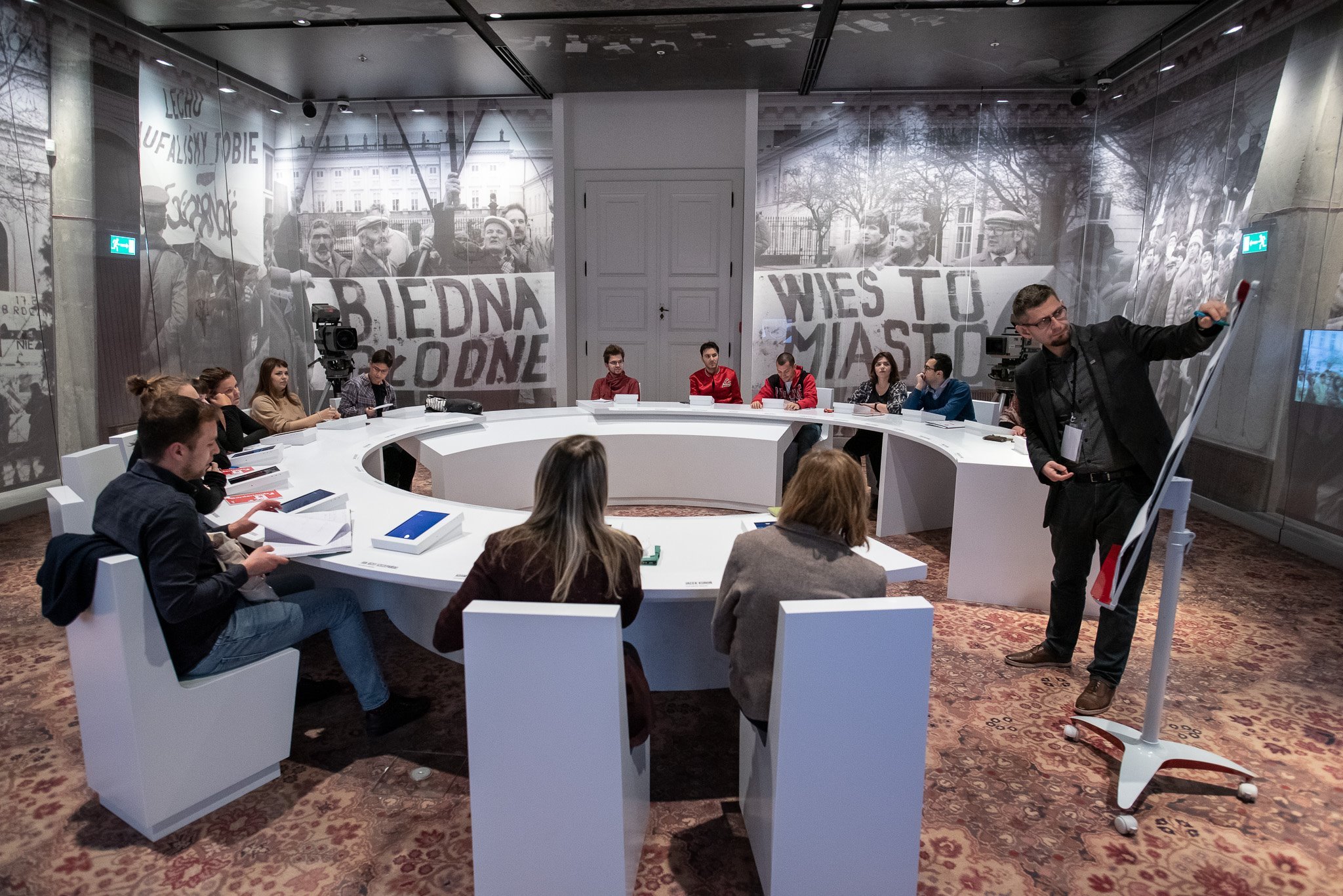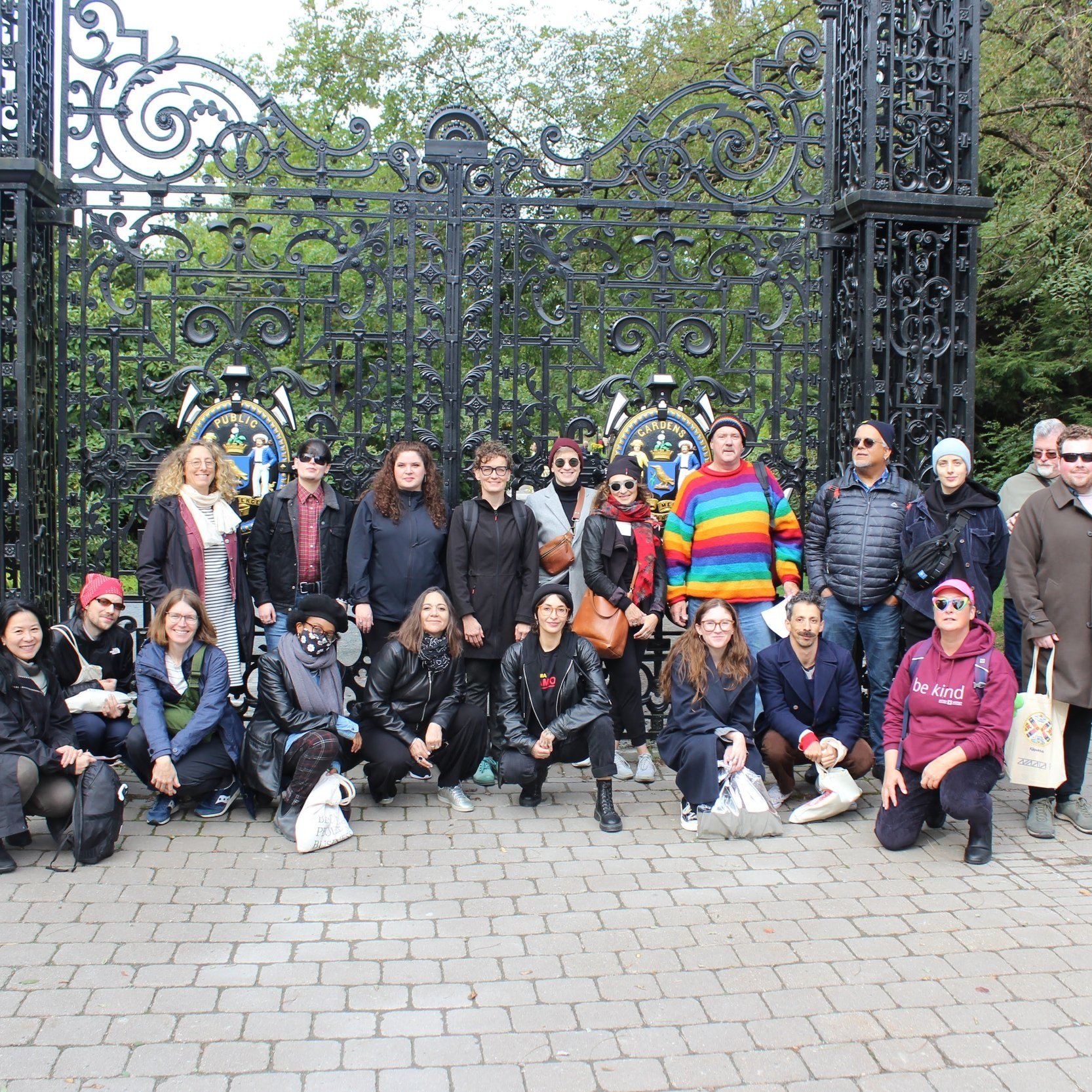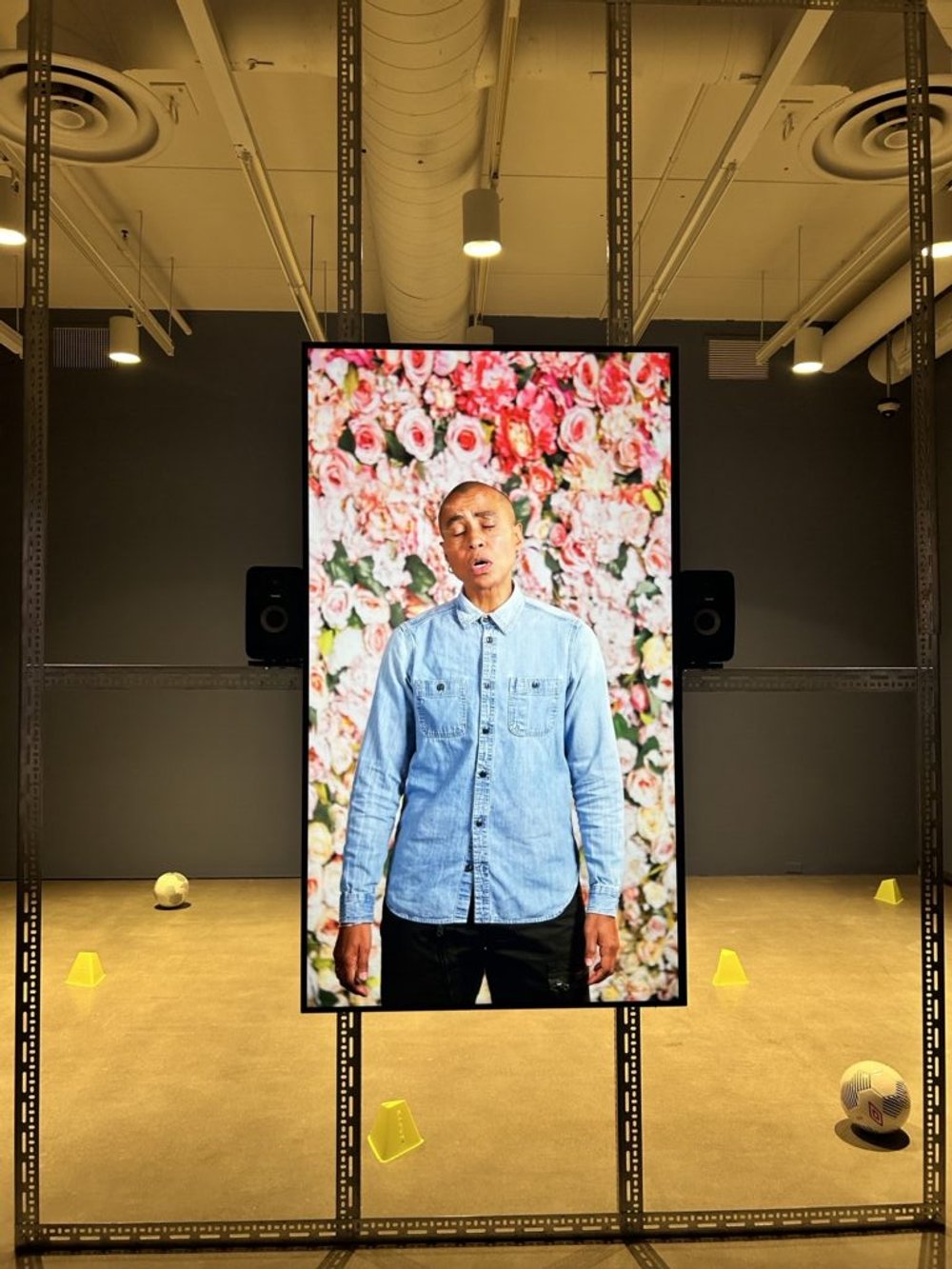Welcome to TTTM’s Blog
This page offers a peek into what TTTM is doing and thinking behind the scenes. We showcase short texts related to TTTM’s activities and events, including SnapThoughts, a form developed by the Museum Queeries cluster. Authors are primarily members of the Emerging Scholars & Practitioners Committee (ESPC) with occasional contributions by other TTTM team members or guests, including a twice-yearly project director’s update.

Welcome to the Blog
A message from Erica Lehrer, TTTM's Principal Investigator, to launch the blog.

Enduring Traces of Coloniality in Prague’s Public Space
On one hot July morning, Prof. Markéta Křížová of Charles University led a group of TTTM’s National Heritage and Traumatic Memory (NHTM) research cluster members – gathered in the Czech capital to participate in the Memory Studies Association’s Annual Conference – through the streets and alleys of Prague, highlighting for us visible, if not , traces of the city’s implication in colonial histories. The walking tour formed the core of our cluster’s annual retreat, but it was also a much-needed exercise after the 5 intense days of panels, roundtables, and plenary sessions, all indoors. Strolling around back streets and bridges of Prague’s historic heart, Markéta pointed out various figures illuminated by the sun’s summer rays. Representing noblemen and Jesuit priests, some of them closely linked to Czech culture and history, with the latter particularly involved the ‘civilizational mission’ of spreading Christianity across the world – a key pillar of European colonial ideology.

A Question of Decolonization in the Curation of Cultural Content in Palestine
Hiba Burqan pulls on her experience of over two decades as a cultural worker in Palestine to illustrate how the past is still present in everyday Palestinian behaviours, practices, choices, and visual language. She explains how Palestinian cultural museums often look away from this rich contemporary cultural content in favour of content that highlights narratives of victimhood and cultural loss. This piece is a call to decolonize museum practices and to utilize more local approaches that could ensure the reflection of the perspectives and voices of Palestinian culture in Palestinian museums.

Museums, Authority, and the Ambivalent Status of Public Statements
The panel “Museum Statements, Open Letters, and Institutional Critique in Times of Polycrisis,” held at TTTM’s annual gathering in Ottawa, brought together eight scholars and practitioners to explore the politics of museum statements in the face of current conflicts. Organized by Co-Investigator Dr. Shelly Ruth Butler and Research Assistant Varda Nisar, the panel addressed the question: Are public statements by museums useful? In this piece, Affiliate Hugo Rueda reframes the question as “to whom are such statements useful?” and investigates the tension between museums’ institutional authority and (often self-claimed) neutrality.

Black Artistic and Curatorial Practices in Conversation: Reflecting on Andrea Fatona's “Practice as Ritual/Ritual as Practice”
Research Assistant, Mahlet Cuff, reflects on visiting the exhibition “Practice as Ritual/ Ritual as Practice” as part of TTTM's 2024 Annual Gathering. Cuff highlights how the exhibition serves as an invitation for Black and African Diasporic individuals to reflect on shared histories and gives insight to the ways that Black Canadian curatorial practices have left an imprint within arts institutions and museums.

TTTM Year 4 Annual Gathering: Intersections in Critical Curating
Hosted by the Children’s Museology Cluster, the Annual Gathering, themed Intersections in Critical Curating, brought together members and collaborators at Carleton University, the Canadian Museum of History, and the Ottawa Art Gallery (OAG). Over four days of vibrant discussion, exhibition tours, and workshops, participants explored themes of decolonization, intergenerational engagement, and radical inclusivity in museum spaces.

We Are Small but Important: Exploring Child Participation in Taiwan with Monica Eileen Patterson
After attending the 2024 International Symposium on Children’s Education in the Art Museum on Designing Exhibition for Children, Dr. Patterson spent an additional week in Taiwan to learn more about the current state of child participation in Taiwanese museums. Chun- Hui Wang (Affiliate) helped organize site visits to some of the most important places implementing child participation, including the Huashan Prairie Playground, the Puppetry Art Center of Taipei, and the National Taiwan Museum of Fine Arts.

The Museum as a Relationship in Progress: Reflections from the Summer Institute in Museum Studies
Katrina Hermann (TTTM Communications Coordinator) reflects on her participation in the Summer Institute in Museum Studies at Carleton University. This experience allowed her to understand museums in a more relational manner – that one of their greatest values exists in the interactions between the people served and the objects exhibited, and, most importantly, processes undertaken to continually improve this relationship. If museums want to embrace their inherent relationality, they must be dynamic and adaptable, instead of perpetuating practices rooted in rigidity and exclusivity.

On Emergence and Where My Research Will Live
Mika Castro (TTTM Research Assistant) reflects on what it means to be "emerging" in the field of museum studies and how their research can exist outside of traditional academic and institutional boundaries.

Whither the “Decolonial” in Decolonial Museum Discourses
This past Fall, I watched Mati Diop’s Dahomey (2024), a film about the repatriation of 26 Benin Bronzes looted from the Royal Kingdom of Dahomey (present-day Benin) by French colonists. The film, which I would describe as made in the style of documentary, but haunted by the spirit of phantasmagory, follows the Benin Bronzes as they commence their homeward journey from the Musée du quai Branly in Paris through the logistical underbelly of museum crating, shipping, condition assessments, public debates, and their ceremonial unveiling through public exhibition.

A Fresh Idea Struck in Taiwan: Exploring Children’s Museology with Monica Eileen Patterson
How can museums better engage with children in ways that are inclusive, respectful, and fun? Chun-Hui Wang reflects on how her work in children’s museums in Taiwan has been influenced by Dr. Monica Eileen Patterson and details two talks Dr. Patterson gave in 2024 at the Taoyuan Museum of Fine Arts and the Kuandu Museum of Fine Arts.

On Being a Museum Scholar: Curating Research in the Field
Kacper Dziekan (TTTM Affiliate/Postdoctoral Fellow) reflects on what it means to be "emerging" in the field of museum research and the benefits of non-traditional academic career paths.

Searching for Black Queer Manitoban Lives in the National Archives for Queer and Trans People: Visible to Some but Invisible to Many
Looking through photographs from the national ArQuives (previously the Canadian Lesbian and Gay Archives) located in Toronto, I found images of gay liberation marches in Winnipeg from the 70s, 80s and 90s. They made Winnipeg’s Queer community seem large. It was apparent that people came out in numbers to fight for their rights with organizations such as the “Winnipeg Lesbian Society.” Notably, however, not one Black person is visible in these photographs …

The Insightful Dynamics of In-Person Encounters: Interviews at the Musée ilnu de Mashteuiatsh
TTTM Affiliate, Karine L’Ecuyer, reflects on her visit with Mashteuiatsh Ilnu Museum team members in February 2024.

Who Was in Paris? Musings on the Louvre and the Musée d’Orsay
In “Blackening the Louvre Museum: Beyoncé, Jay-Z, and the Legacies of Slavery” , art historian Ana Lucia Areujo argues that Jay-Z and Beyoncé’s music video for their song Apeshit – in which the duo and Black dancers perform in the Louvre’s empty halls and in front of some of its most famous pieces – is an example of Blackness being celebrated in a space in which it is not usually present, namely the Louvre. I had never been to the Louvre before, but I had heard that it was a massive space, so when I came face to face with the famous glass pyramid in July of 2023, I was grateful to have something to orient my visit. I took note of the pieces that Areujo mentions – ones that (however inadvertently) engage with legacies of slavery – and I decided to keep an eye out for additional instances where celebrations of empire and European creativity could have made room for the acknowledgment of the legacies of colonialism and imperialism.

TTTM’s 2023 Annual Gathering: Kjipuktuk / Halifax
A short text and photo essay created by TTTM’s Emerging Scholars and Practitioners Committee (ESPC) Representatives, Rebecca Friend and Karina Roman Justo, reflecting on their experiences:

Innovations in Indigenizing the Gallery: An Interview with Curator Wanda Nanibush at the Art Gallery of Ontario
In light of Anishinaabe-kwe curator Wanda Nanibush’s recent, troubling, and abrupt departure from the Art Gallery of Ontario, we are sharing this interview from the forthcoming book Beyond Museum Walls (Jagiellonian/Columbia University Press), in which Thinking Through the Museum’s Heather Igloliorte converses with Nanibush about the tremendous Indigenous and decolonial accomplishments Wanda and her colleagues realized at the AGO during her tenure. The interview was conducted in 2019 on behalf of the Beyond Museum Walls research project (funded by the Social Science and Humanities Research Council of Canada), but the publication was delayed by the COVID-19 pandemic; the book will now be published in early 2024.

“Trauma, Memory, and Material Culture” Workshop Reflections
Three short texts written by members of TTTM’s National Heritage and Traumatic Memory Cluster, reflecting on their experiences.

SnapThoughts: Michèle Pearson Clarke’s Quantum Choir and Artist Talk
On March 11, 2023, Museum Queeries members visited Plug In Institute of Contemporary Art to see Quantum Choir by Michèle Pearson Clarke and also attended an artist talk at Club 200 featuring Clarke and Alanna Fields.

“Looking for Invisible Lives and Fantastical Creatures”
This graphic recording is a collaborative project emerging from work between Museum Queeries Cluster Research Assistant Mika Castro and graphic recording artist Devon Kerslake at the University of Winnipeg.
